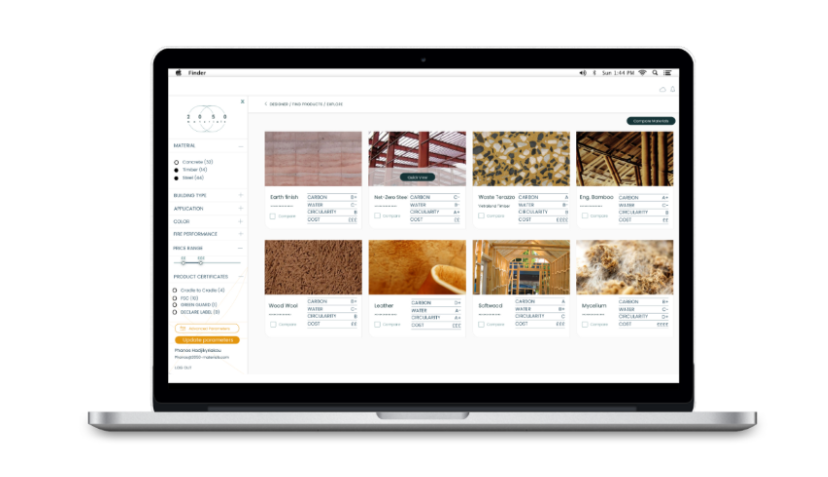
About 2050 Materials
- Founders: Phanos Hadjikyriakou, Stephanos Stephanov, Chandrashekar Challagonda
- Founded in: 2021
- Employees: 8
- Money raised: -
- Ultimate goal: Being the research platform for the construction industry to explore, compare, and source sustainable materials.
The building industry is behind a significant chunk of the carbon dioxide emissions daily. If the need to opt for more sustainable building materials is certainly key, so it is the one to inform builders about them.
That’s the mission of 2050 Materials, a Swiss startup whose online platform helps engineers, architects, and contractors know more about sustainable building materials easily. Researching information on building solutions can be quite time-consuming, even for those eager to adopt more climate-friendly solutions. In a previous installment of the Startup of the Day series, we brought you the story of 2050 Materials. In this episode, the company’s marketing lead Noor Makhoul takes us through the latest developments.
How is 2050 Materials doing since our last interview?
“We successfully launched our platform, which has witnessed an impressive number of signups within a short span of time. This overwhelming response is a testament to the industry’s recognition of the value and potential our platform offers. In addition to our successful launch, we have actively engaged with various impactful events dedicated to the construction industry. These events have provided us with valuable opportunities to network, collaborate, and contribute to the advancement of the industry as a whole.
Moreover, we have forged strategic partnerships with prominent industry leaders such as Kingspan Data & Flooring, Clayworks, Aggregate, and many others. Additionally, we have collaborated with renowned specifiers such as TP Bennett, Allies & Morrison, Woodwalls, and more, establishing ourselves as a trusted platform for innovation and collaboration.”

How did you further develop your platform?
“We enhanced user experience and grew our product library with over 20,000 products populated with sustainability data from Environmental Product Declarations (EPDs) and other certifications. In addition, we simplified the search experience by introducing new material classifications and enhanced product selection efficiency with the newly categorized families based on their functions.
Furthermore, we increased our geographical reach so products with environmental certifications from 62 countries can be found. We introduced our new transparency questionnaire designed for manufacturers in the construction industry to let go of the hassle of filling in countless emails to list their products.”
In our previous chat, you said you wanted to work with architects and contractors to incorporate 2050 Materials into their practice. Has that happened?
“Yes! We now work with over 600 architecture offices in Europe, the UK, and the US. They are actively using our platform to compare and find sustainable materials for both new-build and renovation projects. Recently, we have onboarded a few very large contractors who are using 2050’s API to find alternative materials during the cost estimation process as well as the procurement phases of projects.”

What were the takeaways there?
“The key takeaway is that the industry is still figuring out how to incorporate sustainability into existing workflows. We know we don’t have the perfect solution yet, but it’s clear to us that we are the right partner for the industry to get this right.”
What’s keeping you busy at the moment?
“We just launched the beta version of our API (application programming interface) tool, which can be used to integrate data from various sources, such as material suppliers, manufacturers, and contractors, into a single platform. This data can then be used to calculate embodied carbon emissions for a building project.”

What are your future plans?
“We are currently engaged in exciting initiatives that will position 2050 Materials as the premier tool of choice for architects, contractors, and designers. These projects hold significant promise in making a notable impact on climate change mitigation.”

